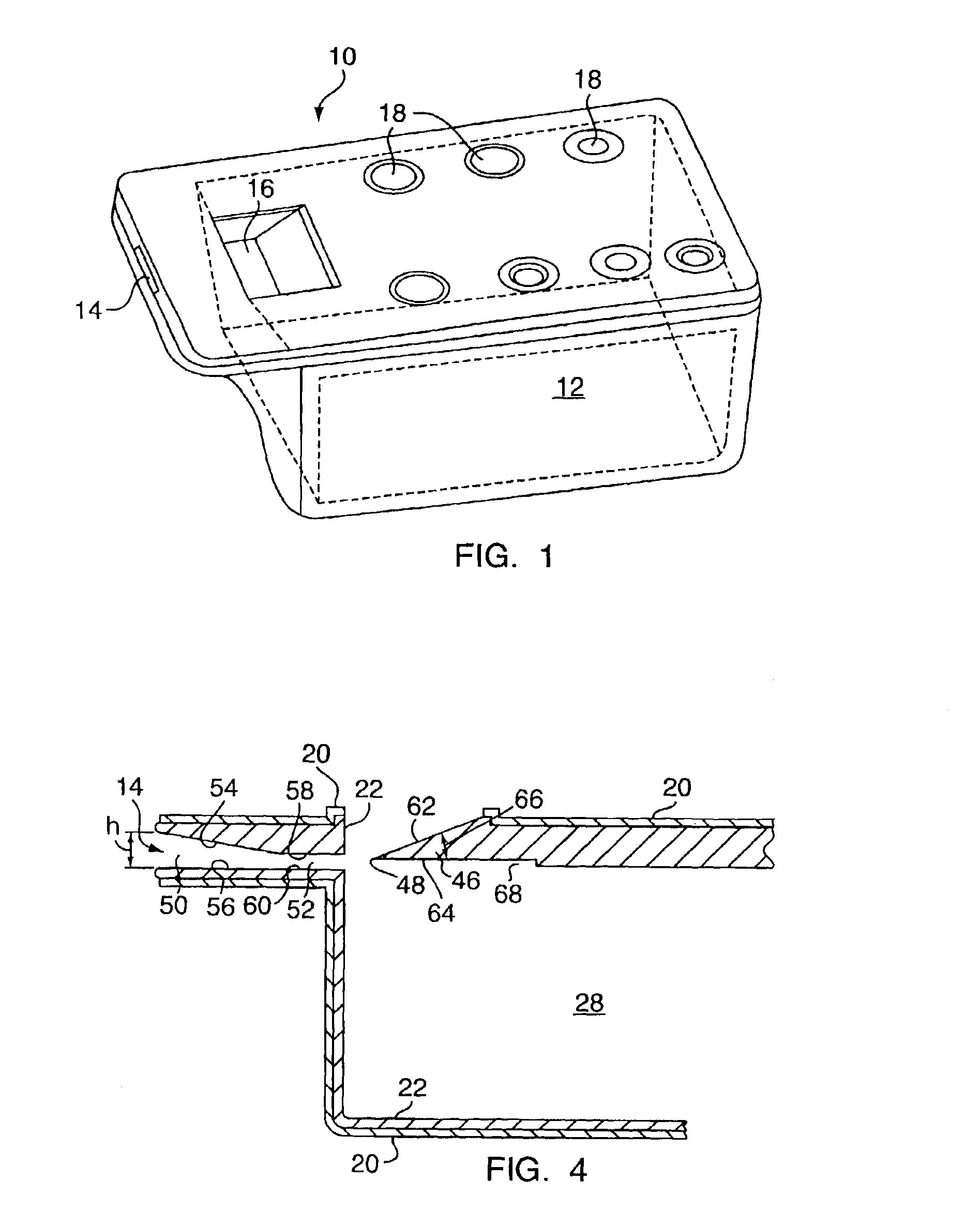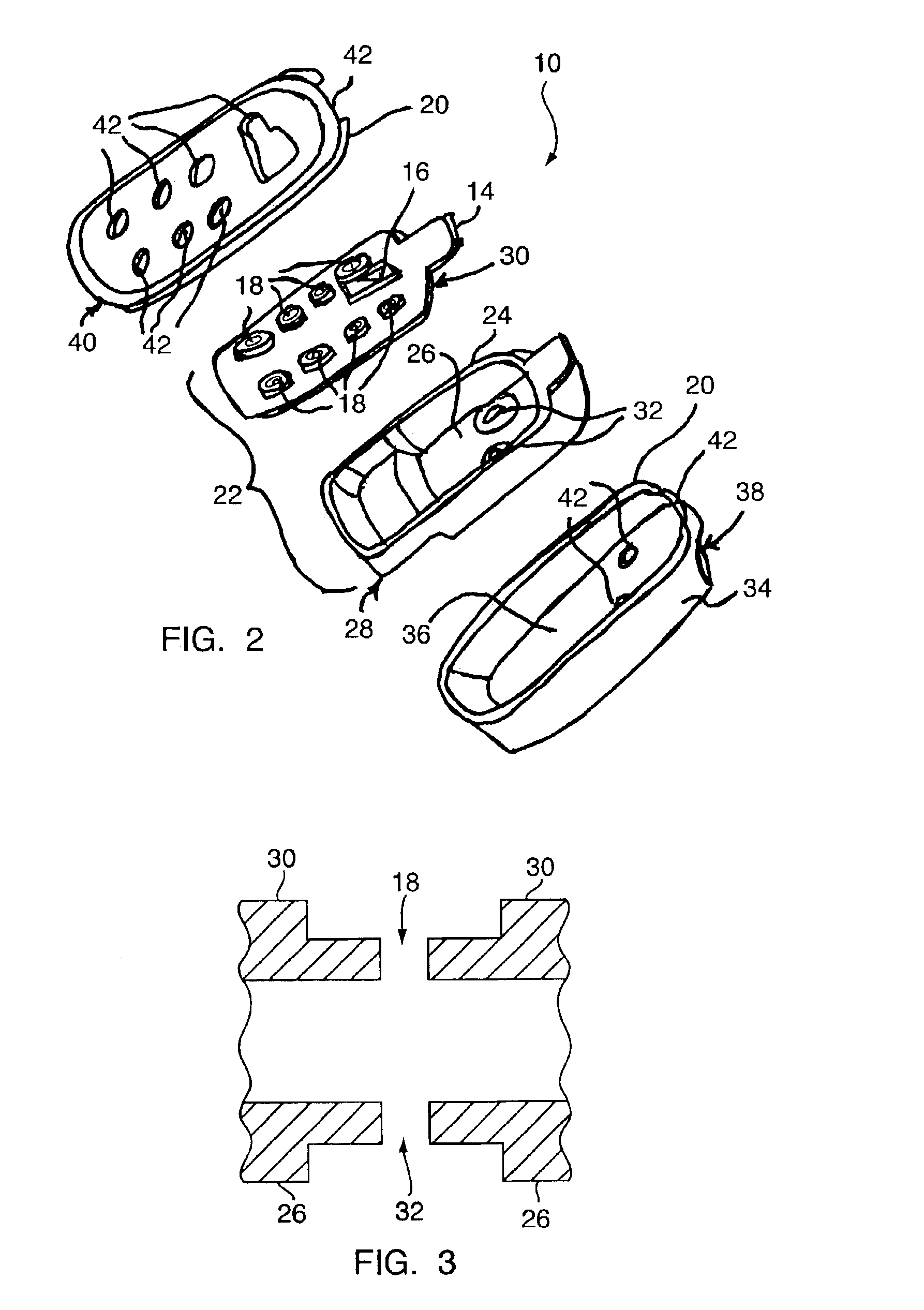Ocarinas with an inner liner and an outer shell
- Summary
- Abstract
- Description
- Claims
- Application Information
AI Technical Summary
Benefits of technology
Problems solved by technology
Method used
Image
Examples
Embodiment Construction
Referring to FIG. 1, an ocarina is shown generally at 10. The ocarina 10 includes an instrument body 12 perforated with a plurality of apertures. The apertures facilitate airflow communication through at least one inner chamber defined by the instrument body 12 and include an airway 14 through which air is blown into the ocarina 10, a fipple window 16 from which at least a portion of the received air is expelled, and a plurality of toneholes 18. Air is propelled through the airway 14 and impinges on a fipple edge, causing the air in the sound chamber 12 to oscillate, which produces sound waves having a frequency and an amplitude. When the toneholes 18 are selectively obstructed during the forcing of air through the airway 14, the frequency and amplitude at which the air in the sound chamber oscillates is varied, thereby producing tones of varying pitches. The obstruction of the toneholes 18 is effected by a person placing their fingers over the toneholes 18 to fully or partially clo...
PUM
 Login to View More
Login to View More Abstract
Description
Claims
Application Information
 Login to View More
Login to View More - R&D
- Intellectual Property
- Life Sciences
- Materials
- Tech Scout
- Unparalleled Data Quality
- Higher Quality Content
- 60% Fewer Hallucinations
Browse by: Latest US Patents, China's latest patents, Technical Efficacy Thesaurus, Application Domain, Technology Topic, Popular Technical Reports.
© 2025 PatSnap. All rights reserved.Legal|Privacy policy|Modern Slavery Act Transparency Statement|Sitemap|About US| Contact US: help@patsnap.com



